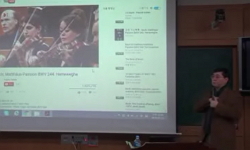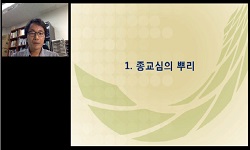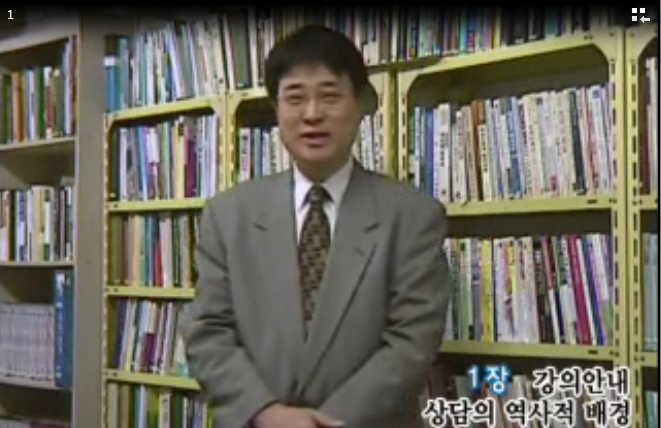본고는 퇴계 이황(1501∼1570)의 시가문학에 나타난 영성을 고찰한다. 본고에서 영성이란 첫째, 영과 마음과 몸의 세 요소가 이루는 통합된 에너지이며 둘째, 초월영역에서는 근원적이고 내세...
http://chineseinput.net/에서 pinyin(병음)방식으로 중국어를 변환할 수 있습니다.
변환된 중국어를 복사하여 사용하시면 됩니다.
- 中文 을 입력하시려면 zhongwen을 입력하시고 space를누르시면됩니다.
- 北京 을 입력하시려면 beijing을 입력하시고 space를 누르시면 됩니다.
https://www.riss.kr/link?id=A87002310
- 저자
- 발행기관
- 학술지명
- 권호사항
-
발행연도
2011
-
작성언어
Korean
- 주제어
-
KDC
001.3
-
등재정보
KCI등재
-
자료형태
학술저널
-
수록면
113-154(42쪽)
-
KCI 피인용횟수
1
- 제공처
- 소장기관
-
0
상세조회 -
0
다운로드
부가정보
국문 초록 (Abstract)
본고는 퇴계 이황(1501∼1570)의 시가문학에 나타난 영성을 고찰한다. 본고에서 영성이란 첫째, 영과 마음과 몸의 세 요소가 이루는 통합된 에너지이며 둘째, 초월영역에서는 근원적이고 내세적인 궁극의 세계를 지향하고(up), 지적영역에서는 스스로의 체험을 바탕으로 한 이론의 정립과 심층적 세계를 추구하고(in), 감각영역에서는 평강과 안정을 실천적으로 지향하며(out). 셋째, 영성은 이러한 세 영역의 조화로운 상호관계를 유지하고자 활동하는 생명력을 뜻한다. 본고는 켄 윌버가 제시하는 영성과 관련한 예술의 세 가지 유형, 즉 감각운동 세계의 예술, 이지적 영역의 예술, 정묘(精妙, subtle) 수준의 예술에 의거 이황 시문학의 특성을 고구하고 있다. 먼저 감각운동 예술에 속하는 퇴계의 시들은 육신의 눈에 의해 감지되는 현실을 그리되 서경적으로 묘사하거나 혹은 관념적 언술로 형상화함으로 소재 중심적인 특성을 드러낸다. 이들 시에 나타난 영성의 특징은 첫째, 산수자연을 자신의 심신을 닦아 오랜 병을 고치고 시름을 풀어나가는 현실적인 위안처로 간주하며 둘째, 관물, 영물, 제화(題畵) 등을 통해 객관적인 미적 가치의 발견과 함께 자연에 대한 감회와 흥취를 구현하고자 하며 셋째, 물리적인 산수자연 속에서 성현의 학문을 탐구, ``진락(眞樂)``을 구하고자 하는 의지를 관념적으로 드러내고 있다. 이지적 영역의 예술에 속하는 시들은 보다 경험적인 세계를 함축해서인지 마음의 눈에 의해 내면적으로 감지되는 시혼을 표상하고 있다. 퇴계의 한시에는 이 유형에 속하는 시들이 가장 많다. 아이들을 교훈하기 위해 씌여진 국문시조 <도산십이곡>은 퇴계의 도학적 이상을 매우 독창적인 구조로 형상화하고 있는데 특히 <도산십이곡>의 여러 내용들에는 이러한 유형의 한시에 산재된 주제들이 집약적으로 농축되어 있다는 점에서 주목을 요한다. 첫째, 자연에의 동화와 도학적 삶의 지향 둘째, 긍정의 시선과 학문에 대한 일관된 뜻의 유지 강조 셋째, 탈속의 완전성 추구와 성현의 길 제시 넷째, 명리에의 집착과 그로 인한 회한과 각성 다섯째, 우주론적 인식을 바탕으로 한 인간의 도 제시가 그것이다. 정묘수준의 예술에 속하는 시들은 관조의 눈에 의해 감지되는 원형적 세계를 표상하는데 초월적 세계와 관련되어서인지 이러한 유형의 시들은 그 수가 그리 많지 않다. 이 유형의 시들이 지닌 영성의 특징은 첫째, 현실 초극과 인빈낙도(安貧樂道)로 나타나는 무욕의 정신을 들 수 있으며 둘째, 퇴계 수양론의 핵심 개념이라 할 수 있는 ``경(敬)``의 실천을 강조함으로 인심의 치우침을 극복하고 자연의 조화로움에 스스로를 일치시키는 지선(至善)의 삶을 지향하며 셋째, 때로 화두처럼 질문을 던져 근원적 사고에 몰입하도록 유도하는바 그것의 궁극은 일체를 맡겨놓은 무심(無心)의 상태에서 ``고요 속의 소리``를 들음을 의미한다. 무심코 맡겨두는 자리야말로 자연과 하나를 이루는 천인합일의 높이요 관조를 통해 퇴계가 발견한 원형의 표상인 것이다.
다국어 초록 (Multilingual Abstract)
This study is focused on the spirituality of the poems of T`oegye Yi Hwang. In this study, the spirituality is defined as, first, the integral energy consisted of body, mind and soul. Second, the spirituality has a direction going up to the fundamenta...
This study is focused on the spirituality of the poems of T`oegye Yi Hwang. In this study, the spirituality is defined as, first, the integral energy consisted of body, mind and soul. Second, the spirituality has a direction going up to the fundamental and ultimate realm in the transcendental respect, in the intelligent respect, it pursues a deep inward world of idea based on its own experiences and in the sensual respect, it practically pursues a peaceful stability. Third, the spirituality is a life force which is in action of persevering the harmonious interrelationship of those three respects. In this study, the world of poems of Yi Hwang has been observed according to the three types of arts suggested by Ken Wilber. The types are the arts of sensual movement , the arts of intelligent realm and the type of subtle level of arts related to the body and mind. The result of this observation is as follows. First, the poems belonged to the arts of the sensual movement reveal the material-centered traits by transforming the sensual world into the pre-symbolical words of conception and the description of physical Nature. Accordingly, the spiritual characteristics of this type of poems are 1) Nature is regarded as a realistic comfortable shelter in which physical deceases are healed by disciplining one`s body and mind, 2) the excitement of discovering the objective aesthetic value of beauty of the spiritual things in the natural objects. 3) revealing the true pleasure of pursuing the study of masters. Second, the poems categorized in the intelligent realm of arts contain more empirical and deepen symbolism sensed through deeper insight of mind. The poems of T`oegye mostly belong to this type. "Dosansibigok", a poem in Korean, is regarded as a representative one among this type of poems, which has the most perfect structure and aesthetic value. Especially, this poem was written for the purpose of edifying children. In "Dosansibigok" the various theme ideas are implied ,which are similar to those in the poems of Chinese characters. For example, 1) getting an assimilation with man and Nature, the pursuit of life based on the Confucianism, 2) the positive view point and maintaining the constant will to study, 3) the pursuit of perfect unworldiness and suggestion of the way to the saints, 4) the attachment to the honour, the lessons from regretfulness 5) the pursuit of the way for harmonizing Nature and man`s morality. Third, the poems of subtle level of arts related to the transcendental realm express the super symbolic realm through the immediate intuition on the transcendental realm. Accordingly, the spiritual traits of this type of poems are 1) the unavaricious spirit which is expressed as contentment of freedom from the worldly value 2) the emphasis on the ``Kyong``(respectfulness), the essence of T``oegye``s thoughts, (respectfall the prejudices are overhase ,harmonizing with the Nature, and pursuing the ultimate goodness 3) listening to the sound of silence being committed to no-mindedness, arriving at the highest realm of oneness with Nature and human-beings.
참고문헌 (Reference)
1 손종호, "한국시의 영성과 종교적 상상력" 국제비교한국학회 17 (17): 261-286, 2009
2 조동일, "한국시가의 역사의식" 문예출판사 1993
3 조동일, "한국문학사상사시론" 지식산업사 1978
4 최진원, "한국고전시가의 형상성" 성균관대학교 대동문화연구원 1988
5 정순목, "퇴계정전" 지식산업사 1992
6 嚴連錫, "퇴계의 자연인식과 도덕적 지향" 퇴계학연구원 111 : 45-106, 2002
7 손오규, "퇴계의 산수문학, in 퇴계의 산수문학연구" 제주대학교 출판부 2000
8 국제퇴계학회, "퇴계의 문학과 사상" 2009
9 왕 소, "퇴계시학" 중문출판사 1997
10 김태안, "퇴계시의 한 연구" 성균관대학교 1992
1 손종호, "한국시의 영성과 종교적 상상력" 국제비교한국학회 17 (17): 261-286, 2009
2 조동일, "한국시가의 역사의식" 문예출판사 1993
3 조동일, "한국문학사상사시론" 지식산업사 1978
4 최진원, "한국고전시가의 형상성" 성균관대학교 대동문화연구원 1988
5 정순목, "퇴계정전" 지식산업사 1992
6 嚴連錫, "퇴계의 자연인식과 도덕적 지향" 퇴계학연구원 111 : 45-106, 2002
7 손오규, "퇴계의 산수문학, in 퇴계의 산수문학연구" 제주대학교 출판부 2000
8 국제퇴계학회, "퇴계의 문학과 사상" 2009
9 왕 소, "퇴계시학" 중문출판사 1997
10 김태안, "퇴계시의 한 연구" 성균관대학교 1992
11 이정화, "퇴계 이황의 시문학 연구" 보고사 2003
12 정동화, "퇴계 이황의 산수시 연구" 단국대학교 1993
13 기태완, "퇴계 매화시첩" 보고사 2007
14 Wilber.Ken, "통합비전" 물병자리 2008
15 이동영, "조선조영남시가의 연구" 부산대학교출판부 1998
16 신연우, "이황시의 깊이와 아름다움" 지식산업사 2006
17 이광호, "이퇴계 학문론의 체용적 구조에 관한 연구" 서울대학교 1993
18 Wilber.Ken, "의식의 스펙트럼" 범양사 2006
19 김준오, "시론" 문장 1984
20 윤영춘, "시경" 한국협동출판공사 1984
21 Wilber.Ken, "무경계" 무수 2005
22 Wilber.Ken, "모든 것의 역사" 대원출판사 2004
23 이 황, "도산전서" 한국정신문화연구원 영인 1980
24 이 황, "도산잡영" 을유문화사 2005
25 성기옥, "도산십이곡의 재해석" (91) : 2001
26 이 황, "국역 퇴계집 1~2권" 민족문화추진회 1977
27 신호열, "국역 퇴계시 1~2권" 한국정신문화연구원 1990
28 최진원, "국문학과 자연(3판)" 성균관대학교출판부 1986
29 조윤제, "국문학개설" 탐구당 1973
30 Wilber.Ken, "감각과 영혼의 만남" 범양사 2007
31 Fuller R C., "Spiritual,But Not Religious" Oxford Univ. Press 2001
32 Wilber.Ken, "Eye to Eye" 대원출판사 2004
33 Goddard N.C., "A Response to Dawson's Critical Analysis of Spirituarity as 'Integrative Energy" 31 (31): 2000
34 Copleston F.A., "A History of Philosophy" Image 1959
35 성기옥, "<도산십이곡>의 구조와 의미" 한국시가학회 11 : 2002
36 금장태, ""聖學十圖"와 퇴계철학의 구조" 서울대출판부 2001
동일학술지(권/호) 다른 논문
-
- 충남대학교 인문과학연구소
- 윤석진 ( Suk Jin Yun )
- 2011
- KCI등재
-
- 충남대학교 인문과학연구소
- 한영옥 ( Young Mok Han )
- 2011
- KCI등재
-
대학수학능력시험 외국어영역에 나타난 Make, Get, Take의 코퍼스 기반 연어 분석
- 충남대학교 인문과학연구소
- 송선화 ( Seon Hwa Song )
- 2011
- KCI등재
-
- 충남대학교 인문과학연구소
- 조동인 ( Dong In Cho )
- 2011
- KCI등재
분석정보
인용정보 인용지수 설명보기
학술지 이력
| 연월일 | 이력구분 | 이력상세 | 등재구분 |
|---|---|---|---|
| 2026 | 평가예정 | 재인증평가 신청대상 (재인증) | |
| 2020-01-01 | 평가 | 등재학술지 유지 (재인증) |  |
| 2017-01-01 | 평가 | 등재학술지 유지 (계속평가) |  |
| 2014-01-03 | 학술지명변경 | 외국어명 : 미등록 -> THE JOURNAL OF HUMANITIES STUDIES |  |
| 2013-01-01 | 평가 | 등재학술지 유지 (등재유지) |  |
| 2010-01-01 | 평가 | 등재학술지 선정 (등재후보2차) |  |
| 2009-01-01 | 평가 | 등재후보 1차 PASS (등재후보1차) |  |
| 2008-01-01 | 평가 | 등재후보학술지 유지 (등재후보1차) |  |
| 2007-01-01 | 평가 | 등재후보학술지 유지 (등재후보1차) |  |
| 2005-01-01 | 평가 | 등재후보학술지 선정 (신규평가) |  |
학술지 인용정보
| 기준연도 | WOS-KCI 통합IF(2년) | KCIF(2년) | KCIF(3년) |
|---|---|---|---|
| 2016 | 0.44 | 0.44 | 0.4 |
| KCIF(4년) | KCIF(5년) | 중심성지수(3년) | 즉시성지수 |
| 0.38 | 0.36 | 0.658 | 0.14 |




 KISS
KISS







